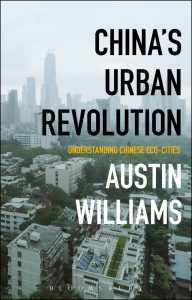Projected Cities
‘Projected Cities: Cinema and Urban Space’ by Stephen Barber; Reaktion Books, 2002. 208pp
Review by Austin Williams | 26 June 2003
This is the latest in the ‘Locations’ series of books examining the relationship between cinema and broader cultural themes or national context. This book specifically addresses the way cities have been portrayed. As with many Reaktion books, the theme suffers from a cultural relativism and a somewhat politically incestuous relationship with the subject.
Speaking of the inter-war and immediate post-war years, Stephen Barber asserts that ‘film images developed the authority to accord validity or veracity to (politically violent) acts and physical gestures’. This is something of an old debate. Were certain actions in Vietnam preordained by the immediacy of the TV coverage? It reminds us of Baudrillard’s insistence that the Gulf War really didn’t happen, all the way through to the modern delusion that reality TV aspires to broadcast ‘honesty’.
Barker shows how film-makers have used cities to make us see bigger pictures. This is undoubtedly true, although probably less so today than ever before – and Barber’s tone has a kind of eulogising conservatism about it, a remembrance of things past, depressed at the shift to digital and the more transient requirements of the modern ‘corporate’media.
Admittedly, there is an interesting discussion around the fact that we develop preconceptions of a place on the basis of its cinematic representation, but ever has it been thus. Books, holiday snaps and family horror stories all colour our perception of places, but that is not what the place is and it certainly doesn’t create the place.






